Real estate investing is often viewed as a wealth-building strategy for the rich. But the truth is: you don’t need a fortune to get started. With the right tools, partnerships, and strategies, you can break into real estate with limited capital—and build real, long-term equity over time.
In this post, we’ll explore 8 practical and proven ways to invest in real estate even if your savings are small, plus tips for minimizing risk and maximizing return.
1. House Hacking: Turn Your Home Into an Investment Tool
House hacking is one of the most accessible ways to enter the real estate market with little money, especially for first-time buyers.
🔑 What Is House Hacking?
You purchase a multi-unit property (duplex, triplex, fourplex), live in one unit, and rent out the others. The rental income helps pay your mortgage, often allowing you to live nearly rent-free.
✅ Advantages:
- Qualify for FHA or VA loans with as little as 3.5% down
- Reduce or eliminate personal housing costs
- Build equity while gaining landlord experience
💡 Example:
Buy a $350,000 triplex with a 3.5% down FHA loan (~$12,250 down). Rent out two units for $1,200/month each while living in the third. The combined rent can cover most or all of your mortgage payment.

2. Partner with Investors: Share Capital, Share Risk
If you don’t have the cash, partnering with someone who does can get your foot in the door.
🤝 Common Partnership Models:
- Money partner + sweat equity partner
- Joint venture agreements for flips or rentals
- LLCs to formalize ownership and profits
✅ What You Need to Bring to the Table:
- Market knowledge
- Property management skills
- Construction or renovation expertise
- The deal itself (finding undervalued property)
📌 Tip: Use a written partnership agreement to clearly define roles, capital contributions, decision-making, and exit plans.

3. Real Estate Crowdfunding: Invest Online with $500 or Less
Thanks to platforms like Fundrise, Groundfloor, and RealtyMogul, you can invest in real estate projects with as little as $10–$500.
🏗️ Types of Projects Available:
- Residential and commercial development
- Multi-family rental complexes
- Real estate debt funds
✅ Pros:
Low entry barrier
Passive income through dividends
Diversification across properties and locations❌ Cons:
Some platforms require you to be an accredited investor
Funds may be locked in for 3–5 years
Not as liquid as REITs or stocks
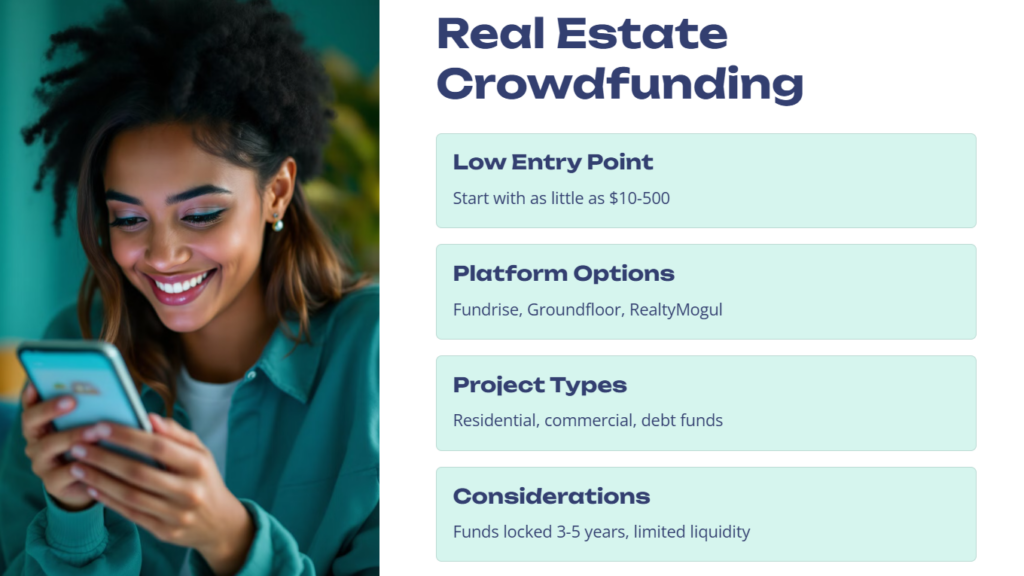
4. REITs (Real Estate Investment Trusts): Real Estate on the Stock Market
A REIT is a company that owns, operates, or finances real estate that produces income. You can invest in REITs just like stocks—with as little as $50–$100.
🏢 REIT Categories:
- Residential (apartments, student housing)
- Commercial (office space, industrial)
- Retail (shopping centers)
- Mortgage REITs (MBS portfolios)
✅ Why Choose REITs:
- Highly liquid—buy/sell anytime on exchanges
- Diversified exposure to large-scale assets
- Dividends paid quarterly
📌 Look for REIT ETFs like VNQ (Vanguard Real Estate ETF) or SCHH (Schwab U.S. REIT ETF) for easy access.
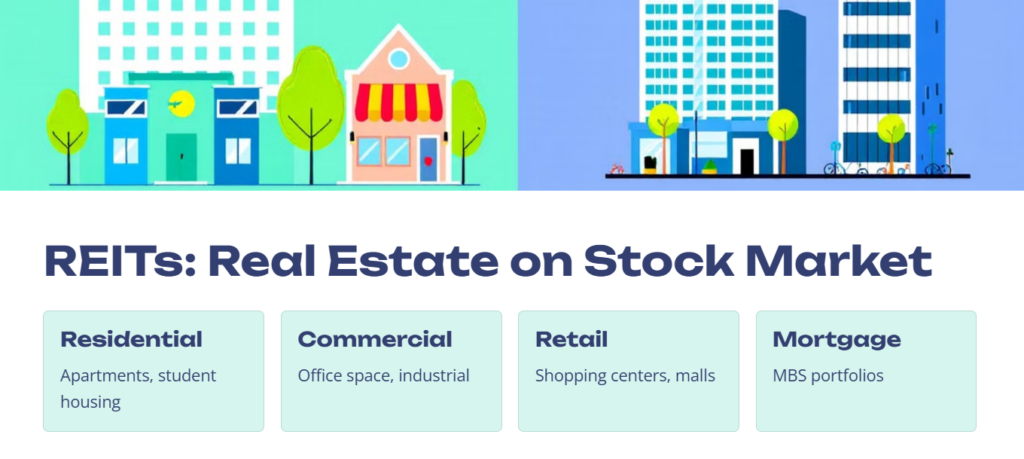
5. Seller Financing: Buy Without a Bank
In a seller-financed deal, the seller acts as the bank. You pay the seller in installments instead of getting a mortgage.
✅ Benefits:
- Lower or no credit requirements
- Flexible negotiation of down payment and interest
- Good option if you’re self-employed or have poor credit
📌 Real-World Example:
You negotiate a $200,000 purchase with 5% down and a 5% interest rate directly with the seller. No bank involved. You build equity over time while avoiding strict mortgage qualifications.

6. Lease Options & Rent-to-Own: Try Before You Buy
Lease option agreements allow you to rent a property with the option to purchase later, locking in a price today while you build up your credit or savings.
✅ Pros:
- Control the property with minimal upfront cost
- Time to improve credit or save for a mortgage
- Lock in purchase price despite market appreciation
📌 Watch for hidden fees or non-refundable deposits. Work with a real estate attorney to review contracts.
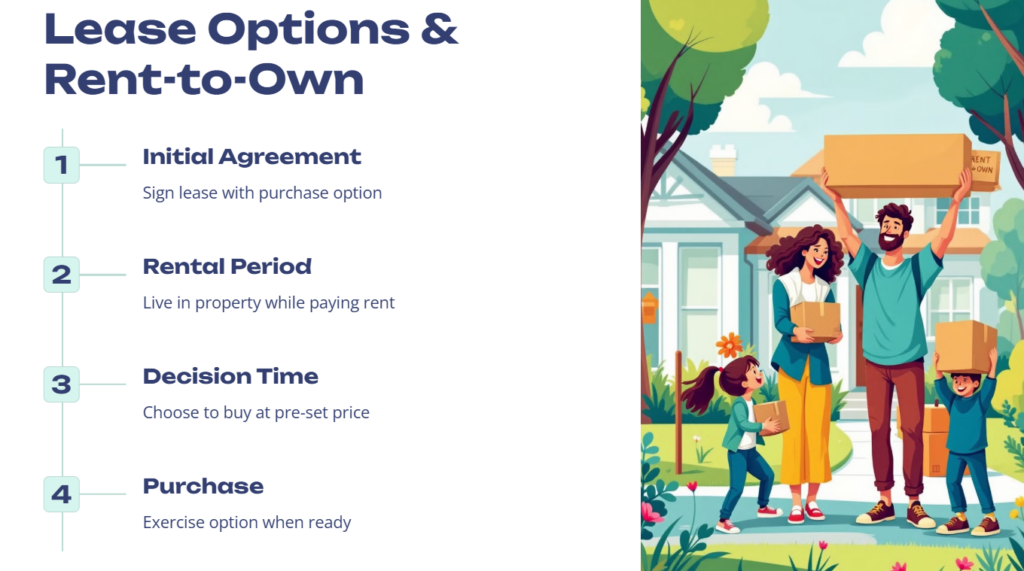
7. Wholesaling Real Estate: Flip Contracts, Not Houses
Wholesaling involves finding distressed or undervalued properties, putting them under contract, and then assigning the contract to another buyer for a fee—without ever owning the property.
✅ Why It Works for Low Capital:
- Minimal money required (earnest money deposit only)
- Fast cash potential
- No ownership or renovation responsibilities
❗ What You Need:
Strong negotiation and communication skills
A network of cash buyers
Local market knowledge to spot deals

8. Use a HELOC or Home Equity Loan: Leverage What You Already Own
If you already own a home, consider tapping into your home equity to fund a down payment or investment.
✅ Benefits:
- Interest rates are usually lower than credit cards or personal loans
- Interest may be tax-deductible if used for property improvement
📌 Caution: You’re using your primary residence as collateral, so this strategy carries risk and requires disciplined repayment planning.
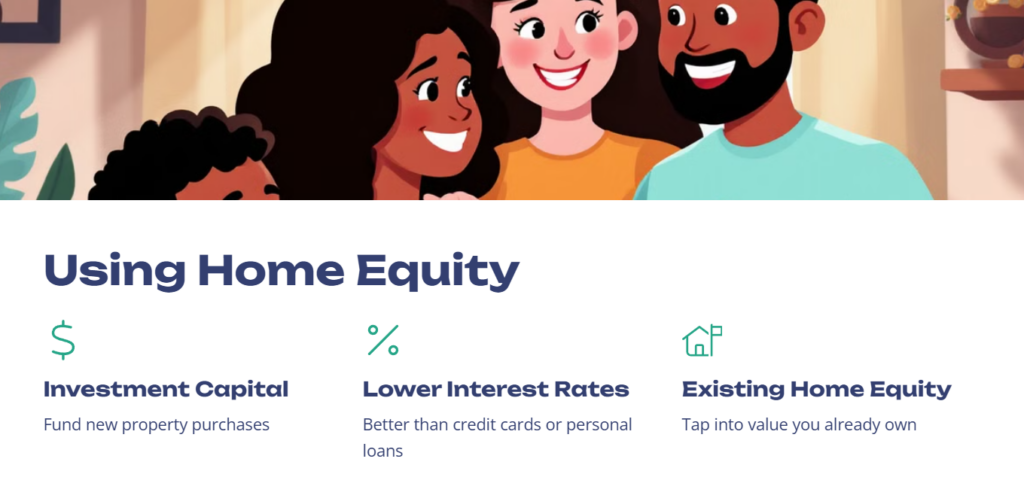
You Don’t Need to Be Rich to Start Investing in Real Estate
What you need is:
✔ A plan
✔ Creativity
✔ Resourcefulness
✔ Willingness to learn and network
By using the strategies above—house hacking, REITs, crowdfunding, seller financing, and more—you can start building your real estate portfolio with minimal capital.
🏁 Remember: Start small, stay consistent, reinvest profits, and never stop learning. Real estate wealth is built one smart decision at a time.
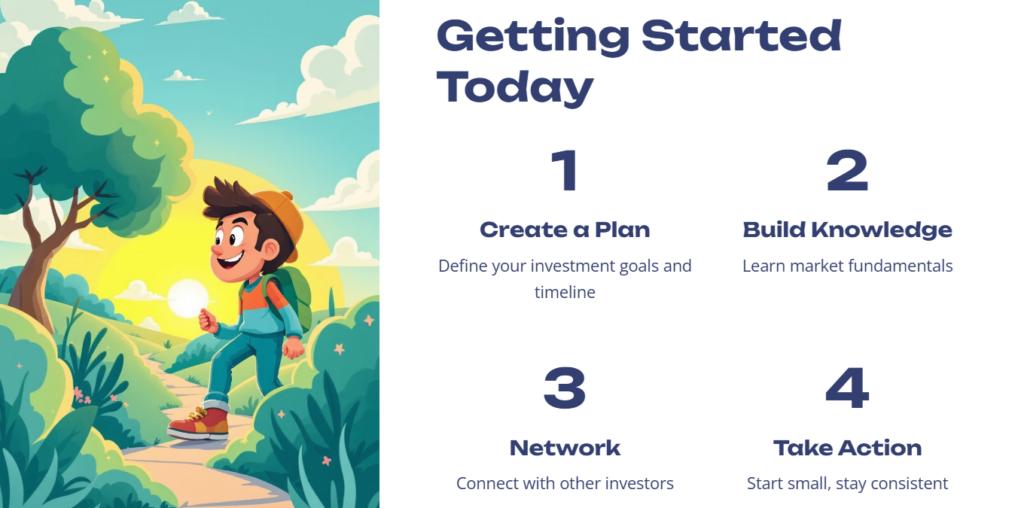
✅ Related Reads You May Like:
- 3 Key Elements to Consider Before Investing in Real Estate
- Renting vs. Buying a Home: Pros and Cons Explained
- 4 Smart Ways to Invest in Real Estate: A Beginner’s Guide to Building Wealth


